A Mac that won’t boot is a pretty useless Mac. But the situation gets worse if you have tons of data that hasn’t been backed up yet. So what do you do in these situations?
Related:
- Mac Running Slow? Selling? How-To Reset MacBook Pro
- My Mac Won’t Start or Boot: How To Fix White Screen
- Fix a MacBook that keeps powering off or restarting randomly
It’s tough to say. There could be a variety of problems causing a Mac’s boot process to fail or for the boot process to get “stuck” on the loading bar. The issue is likely fixable, but it may not be the simplest fix in all cases. Either way, here are the troubleshooting steps you should take to fix a Mac that won’t boot.
Contents
My Mac won’t turn on — now what?
This may sound obvious, but check to see if your Mac has power or if its battery needs charging.
For desktop Macs, a cable may have come unplugged. For older MacBook models, a degraded battery could cause problems that make it appear like it won’t boot.
Try Safe Mode
One of the first things to try when a Mac won’t load into macOS is to simply boot into Safe Mode.
- Shutdown your computer. If it’s off, skip to the next step.
- Press and hold the Shift key.
- Power up your computer.
- Once you see the Apple logo, release the Shift key.
If you Mac successfully boots into Safe Mode, it may have resolved whatever boot issue it was experience. Try restarting your Mac at this point.
Reset NVRAM and PRAM
The next thing is try is to reset your NVRAM or PRAM. This is a basic troubleshooting techniques that can fix a slew of issues on your Mac.

- Shut down your Mac.
- Power your Mac back up.
- Immediately press and hold these four keys: Option + Command + P + R.
- Make sure to hold the keys for at least 20 seconds. On some Macs, you may hear a startup sound play twice or the Apple logo appear and reappear twice.
If this successfully fixed your problem, make sure to go back into System Preferences and readjust anything that was reset. That could include time zone, resolution and sound volume.
Use Disk Utility in Recovery Mode
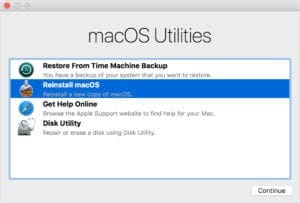
If your Mac is booting up but is stalling on the progress bar or just won’t load into macOS, then there’s likely a software issue.
One of the first things you should do is boot into Recovery Mode and try to repair your primary drive using Disk Utility. Here’s how.
- Make sure your Mac is shut down.
- Hold down the Command + R keys.
- Power up your MAc.
- At this point, the Apple logo should pop up on your display.
- Once you see the Recovery Mode pop up, select Disk Utility from the OS X Utilities menu.
- Select the disk or partition that you have macOS installed on. (If you haven’t messed with this at all, there should only be one.)
- Click on First Aid in the top menu bar.
Once the repair process completes, you’ll want to restart your Mac to see if it fixed the issue.
Reset System Management Controller
Another more in-depth troubleshooting method involves resetting your Mac’s System Management Controller. If none of the methods above worked, then this may be a good option to try next.
It is a fairly lengthy lengthy process, and may removing your MacBook’s battery or unplugging your desktop Mac’s power cable.
In fact, because it varies depending on what Mac model you have, it’s a bit too of a process to fit here. We recommend going to Apple’s support document on the subject.
Restore From Time Machine
You can also try restoring form a previous Time Machine backup to see if that deals with the issue.
- Make sure your Mac is shut down. –
- Plug your Time Machine drive into your Mac
- Hold down the Command + R keys.
- Power up your Mac.
- At this point, the Apple logo should pop up on your display.
- Once you see the Recovery Mode pop up, select Restore From Time Machine Backup.
Reinstall macOS
If worst comes to worst, you may need to reinstall macOS. This doesn’t necessarily have to involve wiping your disk, however.
- Make sure your Mac is shut down.
- Hold down the Command + R keys.
- Power up your Mac.
- At this point, the Apple logo should pop up on your display.
- Once you see the Recovery Mode pop up, select Reinstall from the OS X Utilities menu.
- Recovery Mode will then guide you through the rest of the process.
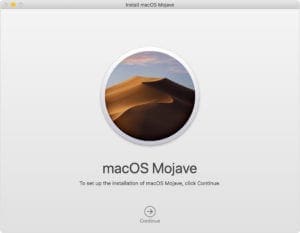
It’s worth noting that you’ll be given the choice to erase your disk or not. While erasing will delete all of your data, it may also be more effective in dealing with software-based problems.
If you have a recent Time Machine backup, we recommend wiping your disk. If you just need to recover some data off your drive, then reinstalling macOS without wiping your disk may be the better option.
If all else fails…
If none of the above methods work, then there is likely a deeper issue that isn’t necessarily user-fixable.
In these cases, we recommend taking your Mac or MacBook to an Apple Store or Apple Authorized Service Provider. The staff there will be able to help diagnose — and hopefully — fix any more serious software or hardware issues.
You can set up a Genius Bar appointment using this link.
A few things to try in the future
There are a number of things that may cause boot problems. Here are a few common culprits that we’ve noticed.
- Avoid bloatware. Items like Mac disk cleaners and other system maintenance tools are generally not necessary on macOS. Worse still, some of these tools can damage your MacBook’s software.
- Be careful with dual-booting. The boot loader in macOS is fairly finicky. If you try to install any other operating systems in dual-boot mode, you can damage the boot loader. If you have to run another OS on your Mac, try using a virtual machine or booting from a USB device.
- Restart your Mac periodically. According to a couple of user reports, this issue popped up when a Mac that hasn’t been restarted for a while is rebooted. While we can’t verify whether this causes the issue, it’s probably smart to restart your Mac every now and then.
Were you able to use the tips to fix the issues on your Mac? Let us know using the comments below.

Mike is a freelance journalist from San Diego, California.
While he primarily covers Apple and consumer technology, he has past experience writing about public safety, local government, and education for a variety of publications.
He’s worn quite a few hats in the journalism field, including writer, editor, and news designer.
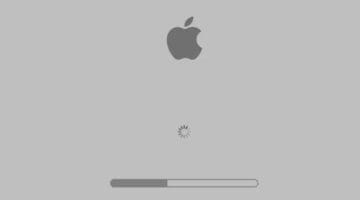



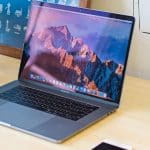

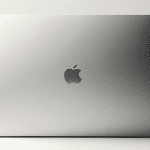



Thank you. If my Mac doesn’t work, I don’t work. So grateful to you for the tips and their clarity.
I have a table top (MAC) apple I’ve tried all of the key commands and nothing works I can’t get past the loading screen. This problem occurred only after the new update was installed. Please help I have unplugged it for days and still Nothing.
Having had this problem for a few days now including intermittent automatic shutdowns, I will be resorting to the Genius Bar! Too risky
how do you do it without a keyboard
Thank you so much. After trying to add Windows to my Mac Pro I was getting “No bootable device”. Option+command+P+R fixed it
Ok, it was first stuck on black screen with apple logo and sometimes would only progress slowly to halfway or not at all. Used the ctrl+option+P+R and got it to login screen. Input my password and now nothing. It won’t do anything after that. What do I do now?
UNSUCCESSFUL. I was prompted to install new OS — not sure which one.
Apple logo and loading bar appeared and began loading.
I returned to my computer hours later to find the loading bar stopped 1/4 inch before the end.
I went to “How to fix a Mac that won’t boot up or gets stuck.”
Tried all options and nothing worked.
I have a 25″ desktop that about 3 years old.
I’ve tried all of the key commands and nothing works I can’t get past the gray screen, I can’t get to the utility, I can’t get to the reinstall, I don’t know what else to do at this moment
MacBook Air screen is black with a locked padlock. I tried to wipe it to give to grandson. obviously I did something wrong .Please Help!
Hi,
My Macbook Pro early 2011 15″ will not install the native osx like 10.13 High Sierra it will install at the startup, then running on progress bar till almost end THEN white screen or turn it off?????
But, if I install the unsupport mac osx 10.15 Catalina it will install successfully but not working well, the screen looks and displays bad (rough).
Trying in any which ways that I can find on the internet but still struggling with the same result.
Any Gurus can share with me how to fix I would appreciate it.
I’m getting a Flashing question mark (? ) in a file folder as well. I have some kind of start up on a sandisk drive but It is all messed up … Can someone help !!
A Flashing question mark (? ) in a file folder is all it will show no censor either.
I tried holding command + R but it didn’t work
Finally got Sur up and running but to be honest if I had known all the hassle to do it I would have stayed with Catalina.
I did get my big desk top going again after going through some your suggests from different sources AND talking to Apple support. So I started over and went through all the steps again AND ON THE LAST one it finally loaded whew I didn’t have to lug it down to Apple which is a fair distance from me……thanks!
THANK YOU SO MUCH!!! I have been trying to get an older MacBook Pro to work and it was stuck on an update that wouldn’t go through. I have looked for a solution in a lot of places and the very first thing (safe mode) worked! I’m not very tech savvy so thank you!! This is exactly what I was looking for. 🙂
Your suggestion of resetting NVRAM and PRAM worked for me. I am asking for trouble, I run a duel boot of Catalina and High Sierra, but it’s the first time in over a year I had an issue. Thanks!